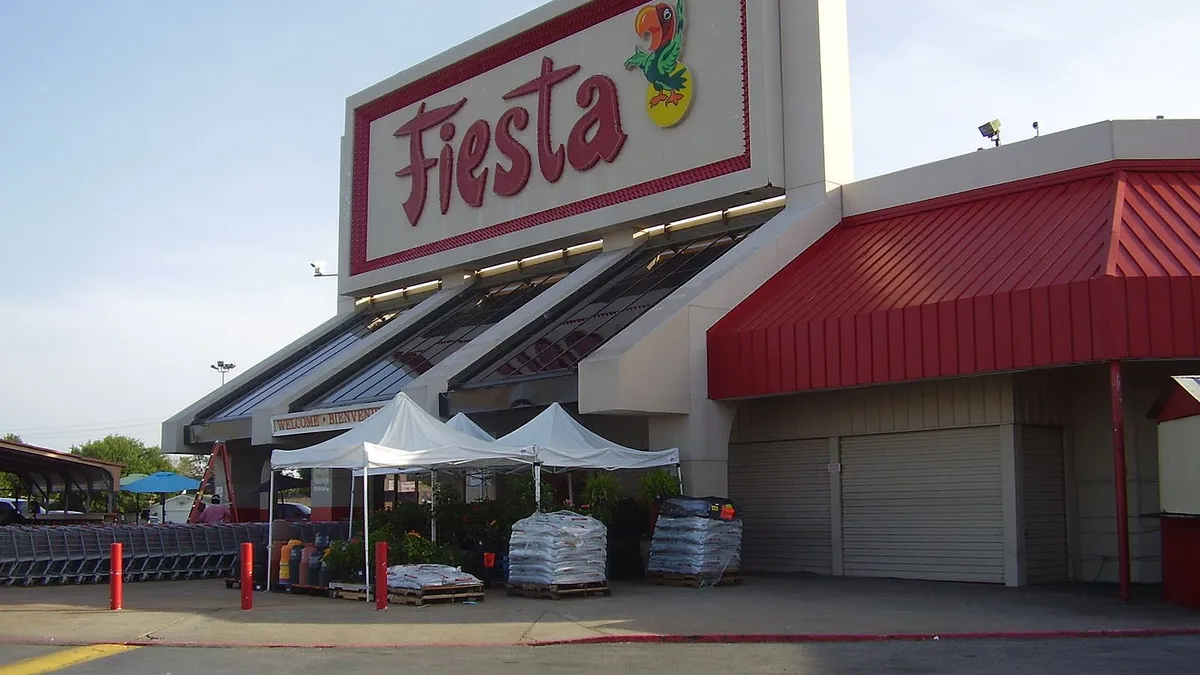Dive Brief:
- A recent report from Rincón & Associates, a Texas-based consulting firm, says supermarkets must change the way they market to Hispanic consumers in order to reach this growing U.S. demographic. According to the report, titled “A Perfect Storm is Facing U.S. Supermarkets,” the number of Hispanics born in other countries compared with those born in the U.S. is declining, and is projected to decline steeply in the future, creating a “perfect storm” for grocers to lose valuable sales if they don’t adjust marketing and sales to better meet the needs of Hispanics born here, the report emphasizes.
- While native-born Hispanics communicate mostly in English and shop at non-ethnic stores, they still consume traditional foods. Mainstream supermarkets that don’t sell Hispanic foods are leaving money on the table, the report notes. Likewise, although foreign-born Hispanics continue to shop at ethnic stores like Fiesta Mart and Supermercado El Rancho, they are increasingly shopping at Walmart, too.
- According to researchers, the most important reasons Hispanics in the Dallas/Fort Worth area gave for choosing a supermarket include: pricing and sales (34%); closeness to home (26%); selection, including a variety of meats, vegetables, fruits and Hispanic foods (11%); freshness of meats, produce and Hispanic foods (8%) and other reasons (19%). They say grocers throughout the U.S. should use these findings to improve their marketing to the Hispanic population.
Dive Insight:
Rincón & Associates suggests U.S. retailers were sold a bill of goods by marketing experts in the past, who told them advertising and labeling items in Spanish would be the best way to attract Hispanic shoppers. That idea is losing traction as this demographic changes radically, the report states.
Ethnic retailers like Fiesta Mart and La Michoacana have long served the growing population of Hispanic consumers in states like Texas and Florida. But these grocers aren't always meeting the demands of native-born Hispanics, whose tastes bend more towards the mainstream and who prefer foods and services like ready-to-eat meals, healthy food options and online ordering that the more traditional Hispanic grocers typically don't offer.
What's more, as shopping preferences among Latinos change, ethnic stores could struggle. Rincon & Associates highlighted a study of Hispanics in the Dallas/Fort Worth metro area that found native-born consumers were more likely to shop at mainstream supermarkets like Walmart, Kroger, H-E-B and Albertsons, while foreign-born individuals were more likely to shop at Walmart and ethnic supermarkets like Fiesta Mart and Supermercado El Rancho. However, the study showed the number of foreign-born Hispanics preferring to shop at ethnic stores was in steep decline, indicating those stores could be in trouble if they do not adjust to meet both the changing needs of first-generation Hispanics and younger U.S.-born shoppers. Companies such as Albertsons, which announced last month it would invest in the 16-store chain El Rancho Supermercado, would do well to keep this study’s findings in mind.
The Rincón & Associates report notes there are opportunities for retailers to appeal to both native and foreign-born Hispanics. Both groups increasingly prefer low prices, a wide variety of culturally relevant foods, friendly customer service and store locations that are close to home.
Ultimately, grocers would do well to understand the makeup of the Hispanic population in their area, and then tailor their offerings accordingly. Southeastern Grocers, for one, has lifted sales by converting select Winn-Dixie and Bi-Lo stores to its Fresco Y Mas format, which targets Spanish-speaking consumers. In California, Northgate Markets has added new products and services to some of its stores in order to appeal to wide variety of consumers, include foreign-born, native and even non-Hispanic shoppers.
Although approaches vary by market, the appeal of Hispanic cuisine remains a strong and growing opportunity throughout the country. According to a recent Research & Markets report, sales of Hispanic foods in the U.S. are expected to grow from $17.5 billion in 2015 to more than $21 billion by 2020.








